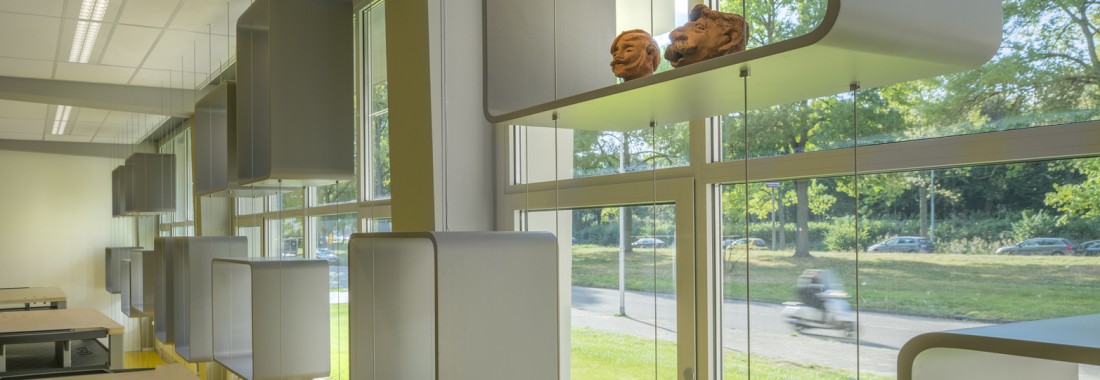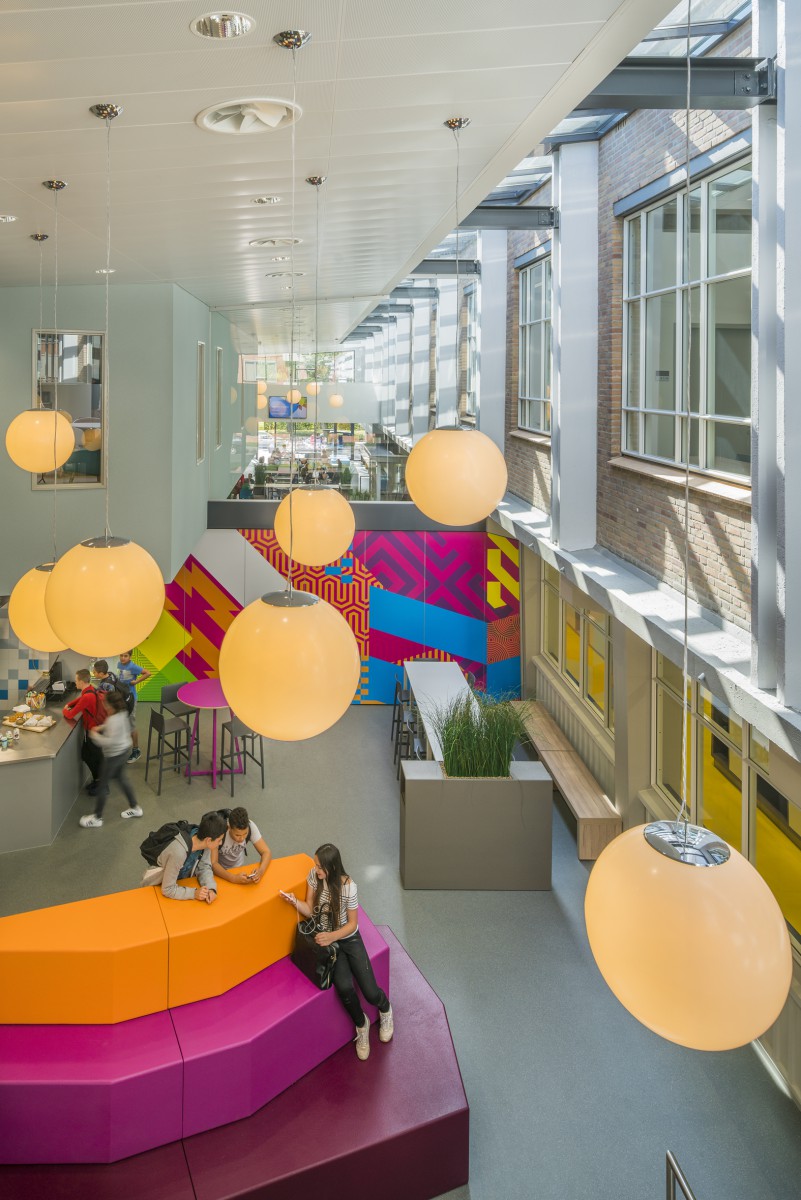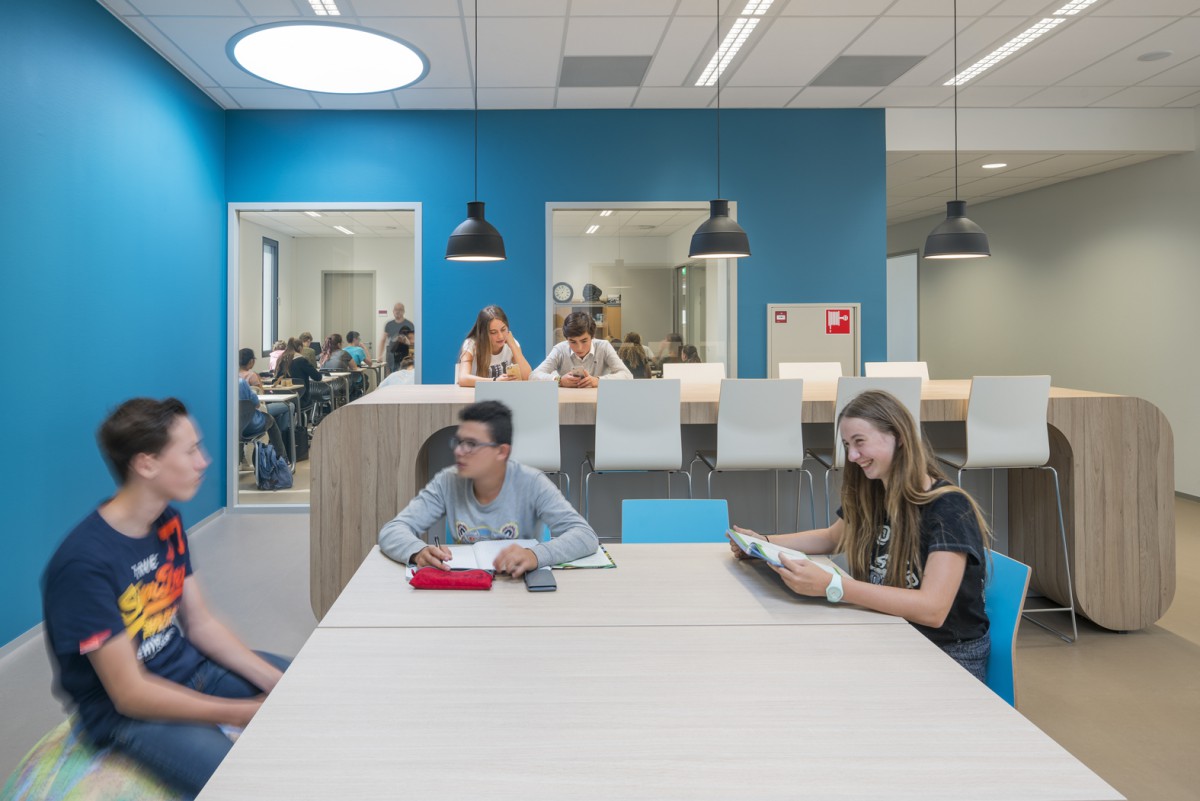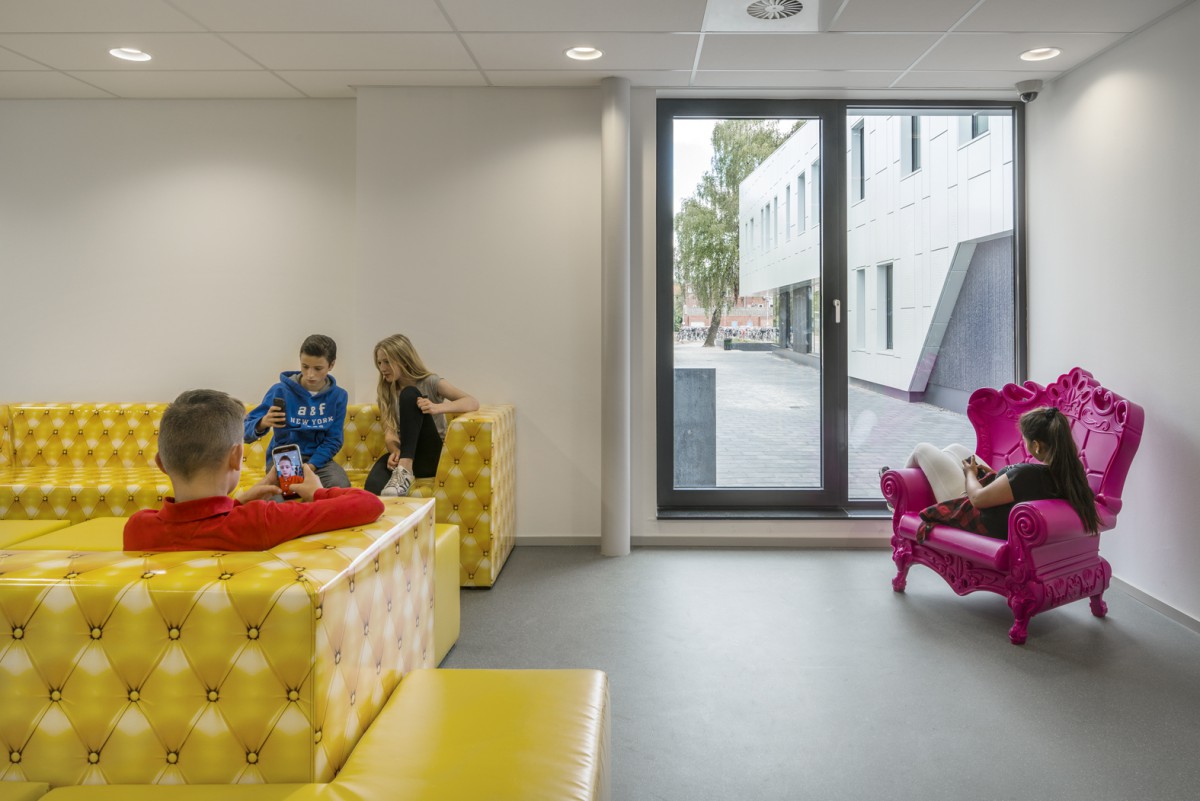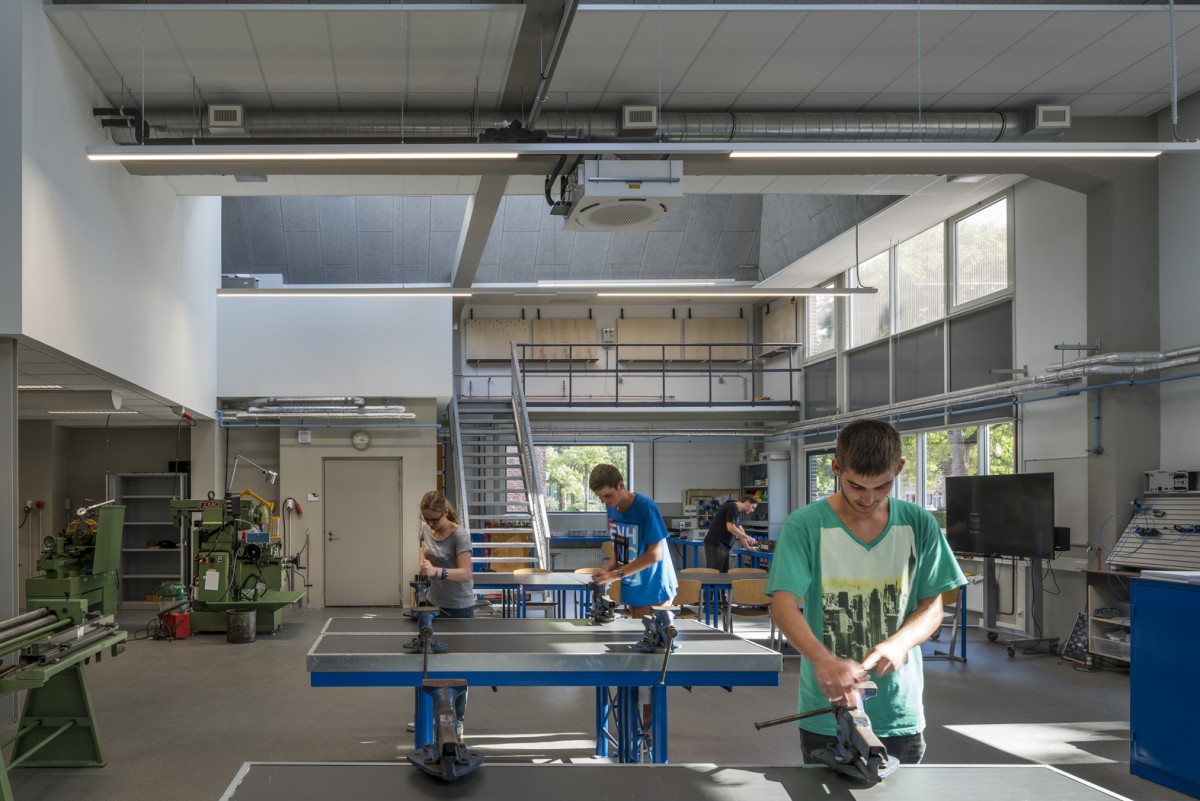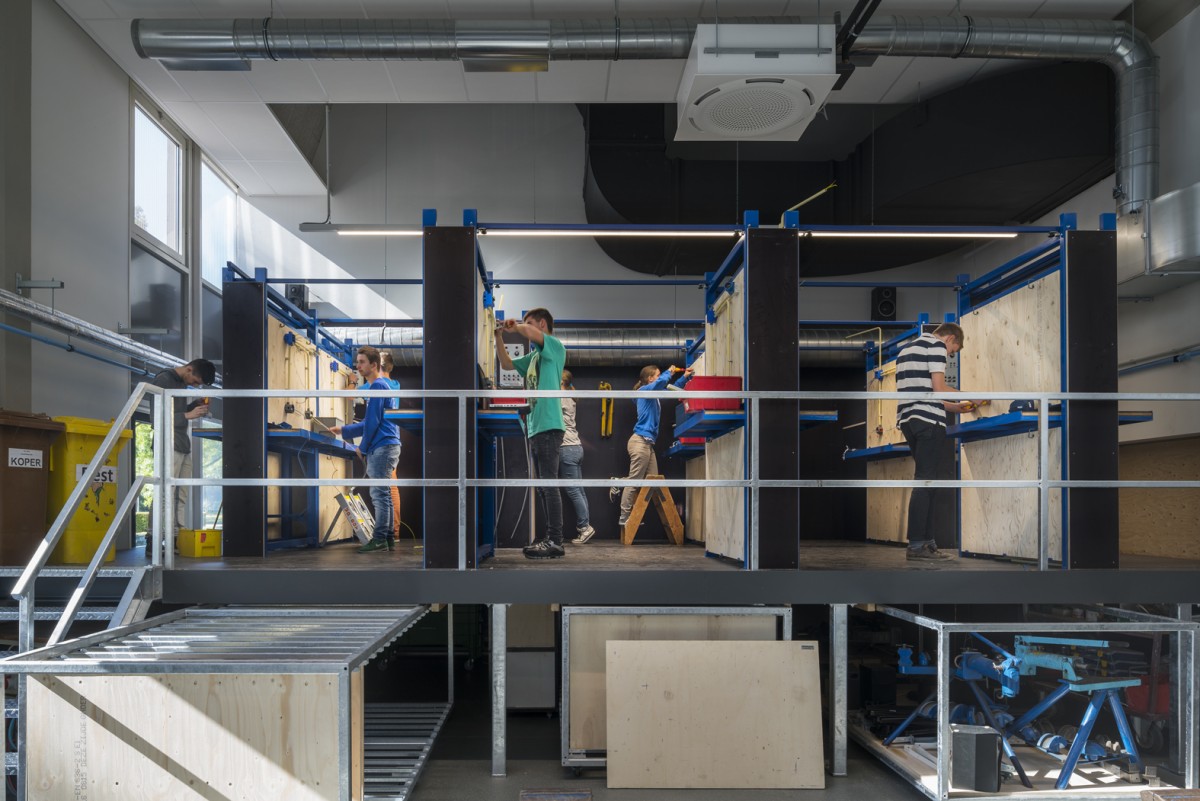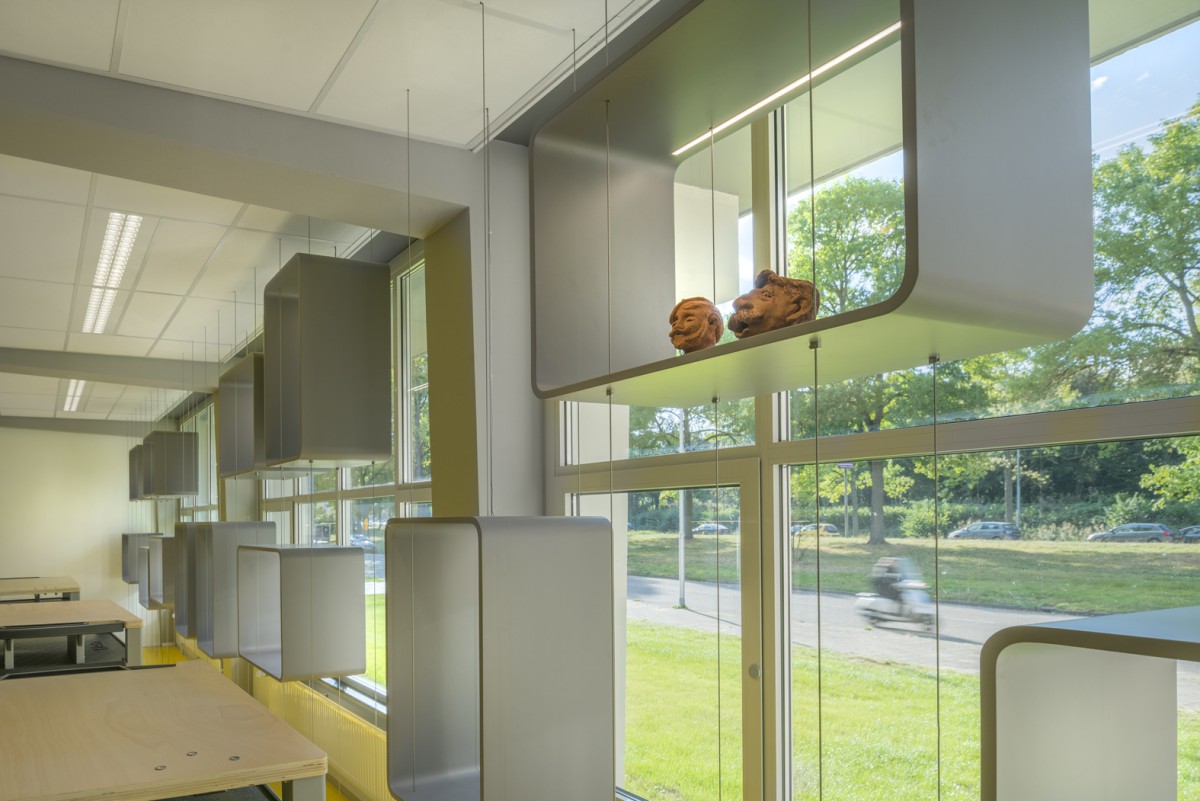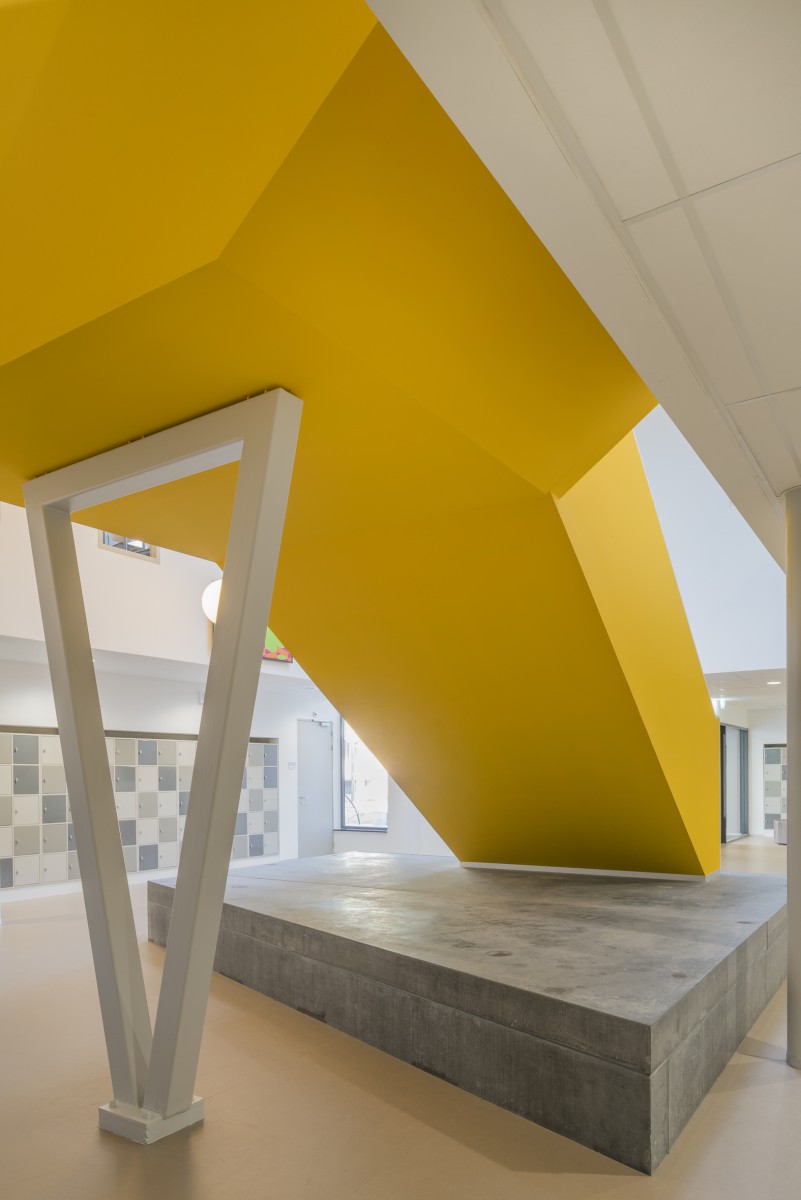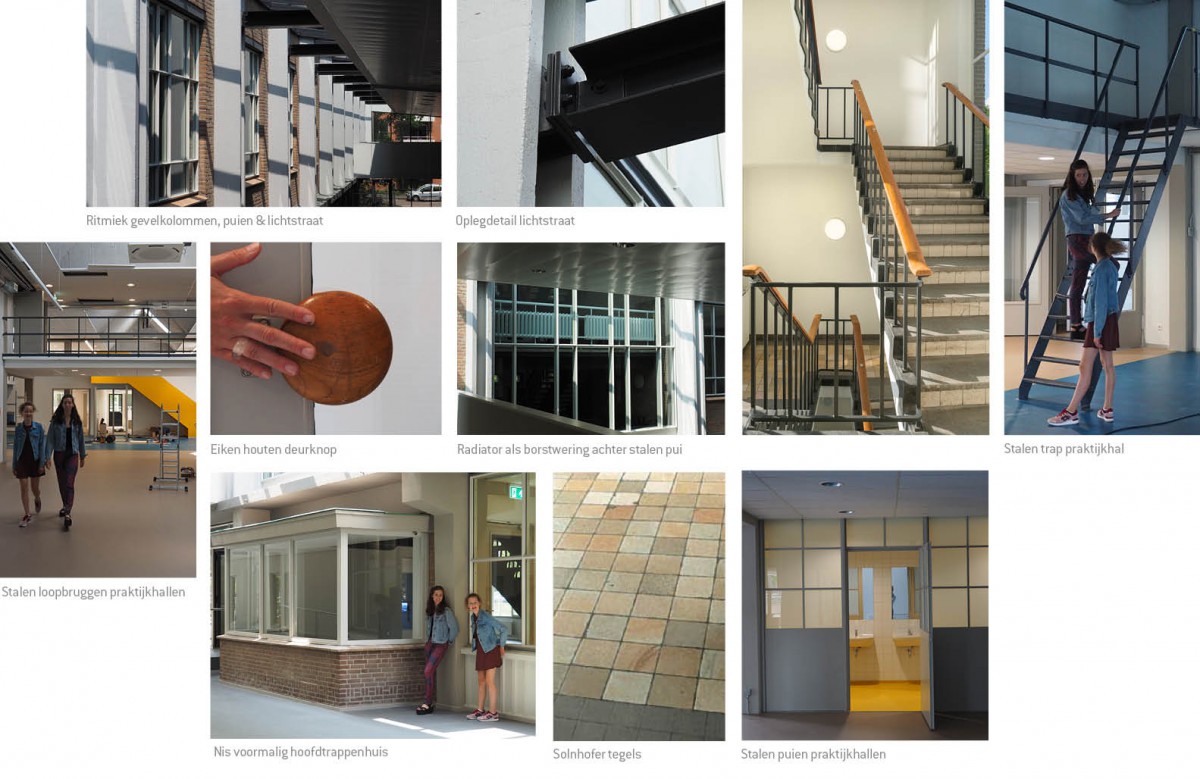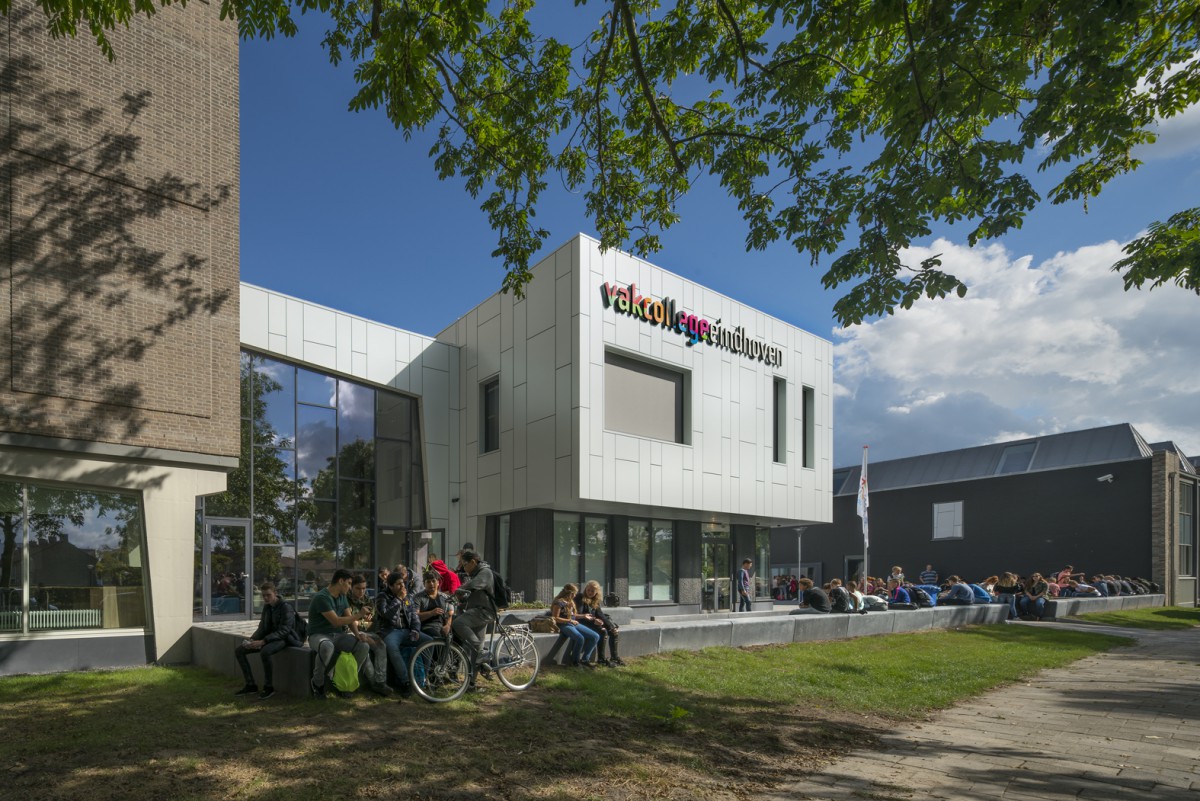The challenge was to house two secondary schools in an existing school complex with additional new construction, whilst preserving the unique identity of each: junior general secondary school Aloysius de Roosten & vocational school Vakcollege Eindhoven. The design includes the architecture and interior design.
One of the first technical schools in the Netherlands
Eindhoven flourished in the 1950s, due to the continued growth of Philips and DAF. Huub van Doorne, DAF's founder and board member of the Tweede Technische School Eindhoven, championed the separation of classrooms for theory lessons and practical instruction. By introducing the school workshop, one of the first technical schools in our country was born. The original complex was designed by the Geenen & Oskam firm in 1952 and consists of a four-storey building intended for theory, nine practical instruction rooms and several outbuildings.
Unique identity
Aloysius de Roosten & Vakcollege Eindhoven are very much two individual schools, each with its own educational vision and a student body comprising about 400 students. Each has its own building, its own square and its own entrance area. At Aloysius de Roosten, education takes place in four inspiration labs surrounded by four classrooms. In these labs, the focus is entirely on discovering, investigating, solving and working together. Vakcollege Eindhoven is a school that feels very strongly about workmanship. The existing practical instruction rooms are superbly suited to this ideal.
Synergy
The new building features a central core in which both schools share functions, such as a central administrative department, a communal kitchen, a large common team room and two overlapping auditoriums. The two schools are, in effect, friendly neighbours.In addition, there are various classrooms that are used by both schools, such as arts and culture spaces, workshops and labs. If their insights or educational visions should change in the future, the complex could also be used as a single building.
Fresh and contemporary, while retaining the original character
These sorts of buildings from the post-war reconstruction era were marked for demolition up until recently; fortunately, they have undergone a strong revaluation. The renovation of the four-storey building and the practical instruction rooms was an ongoing process of deciding between 'original and therefore preserve' and 'functional for the sake of modern-day education'. Examples of characteristic elements that had to be preserved are the decorative concrete parapets, the beautiful Solnhofer floor tiles, the existing steel staircases in the practical instruction rooms and of course 'Smid met leerling', Willy Mignot's 1959 sculpture of a smith and his apprentice. The existing steel window casings were replaced for thermal performance reasons; however, the original line pattern was preserved. The roof timbers above the practical instruction rooms, filled with windows to allow more light into the spaces below, were also replaced. Modular ceilings had been installed underneath them to combat excessive heat and leaks. New roof timbers, with less glass, have now been installed on the preferred orientation side. Lastly, some of the closed brickwork walls of the four-storey building were replaced by glass walls at the ground level, making the handsome concrete pile foundations more visible; this modification is not an original part of the building, though.
Auditorium: a gem between old & new
As stated previously, renovation involves various considerations. In additions to the limitations – particularly with regard to functionality – there are gifts, too. The auditoriums have been given a central place on the border of existing and new. The original exterior wall of characteristic vertical columns and large glass windows has become the interior wall. A skylight has been installed here that extends the entire length of the building, giving the sun free access all day long.

